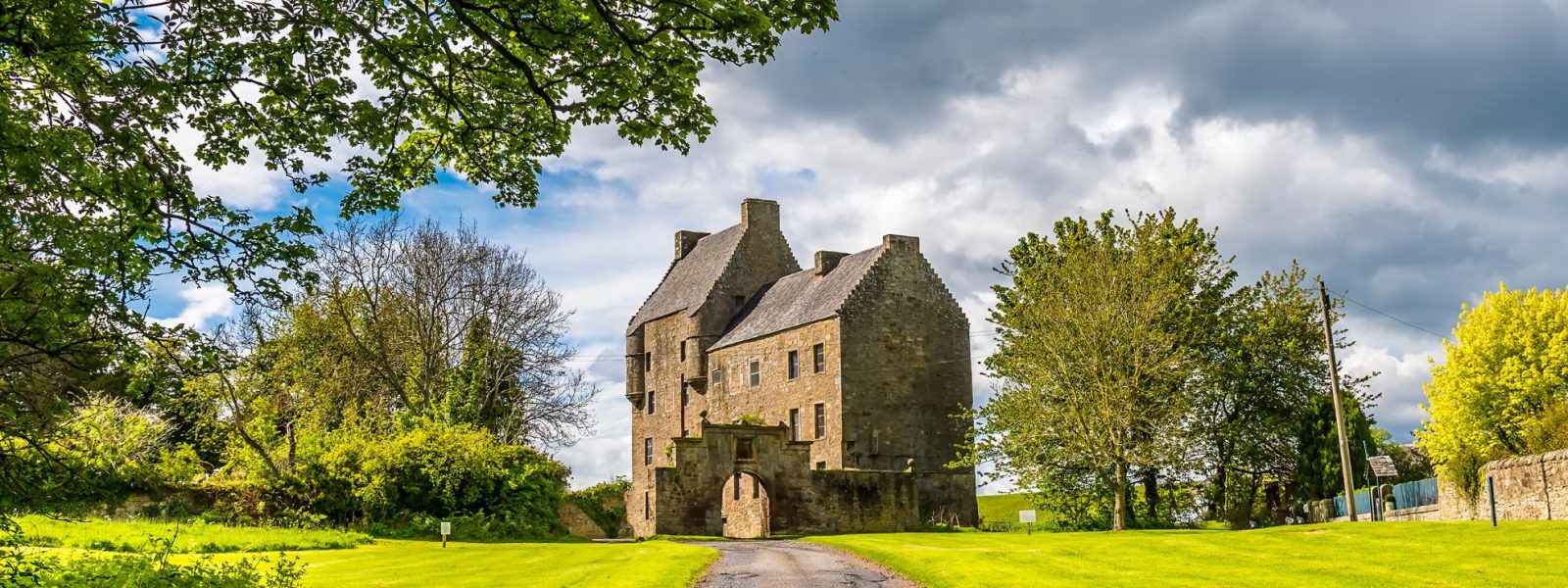There is a stillness to the Highlands that settles over the bones. A hush that speaks not of absence, but of memory. Walk long enough beneath the twisted yews or along the misted edge of a loch, and you might hear it — not a voice, not quite — but something close. A story lingering in the folds of the hills.
It was this sense of presence — timeless, potent, and unspoken — that first stirred the imagination of Diana Gabaldon. Her Outlander novels began not in Scotland but with the figure of a man in a kilt, and from there, the story grew, rooted itself in the ancient soil, and flowered into a world that feels as real as the stones that inspired it.
Much of that world was brought to life in the filming locations scattered across the Scottish landscape. Some are well-known now, their names whispered like a litany by those who’ve made the pilgrimage: Doune Castle as Castle Leoch, Midhope Castle standing as the steadfast Lallybroch, Blackness grim and heavy as Fort William. But others remain tucked away — places without signposts or crowds, places where time folds in on itself.
The village of Falkland, where Claire first wandered the cobbled streets of Inverness. Culross, standing in for Cranesmuir, where Geillis Duncan’s secrets brewed behind shuttered windows. The towering bulk of Linlithgow Palace, once a royal residence and now a ruin, where Jamie endured the worst of Randall’s cruelty under Wentworth’s shadow. Each location chosen not just for its beauty or accessibility, but for how it hums with a kind of truth.
And yet, there are places beyond the camera’s eye — corners of Scotland that didn’t make it onto the screen but lived in the quiet spaces of Gabaldon’s research. The Callanish Stones on the Isle of Lewis, whose stoic silhouettes echo Craigh na Dun. The wild expanse of Rannoch Moor. The echoing silence of Culloden, where fact and fiction cross swords. She has spoken of how Scotland changed her, how it shaped the bones of her tale.
In recent months, the cameras have returned. Filming for the final season has stirred the dust of old haunts, and sometimes — if the light is right — it’s possible to pass by a familiar glen and see the unmistakable glint of studio trailers or hear the faint clatter of costumed boots on stone. The story continues, even now.
Some tours move quickly, checking names off a list. But the most meaningful experiences come from walking slowly, listening well, and traveling with those who know the story — not just of Outlander, but of Scotland itself. Guides who’ve stood beneath the dripping eaves of an ancient kirk and spoken aloud the words Jamie might’ve whispered. Those who can tell you what wasn’t filmed, but could have been. Where scenes were planned, then shifted. Where the actors lingered off camera. Where the soul of the story still lingers.
It matters — not because of celebrity or spectacle — but because Outlander is not just a tale of time travel or romance. It’s a love letter to Scotland. Its mountains and lochs, its griefs and glories, its defiance and tenderness. A land that remembers.
For those who choose to follow in Claire’s footsteps, it is not merely a tour. It is a return — even if one has never been before.

